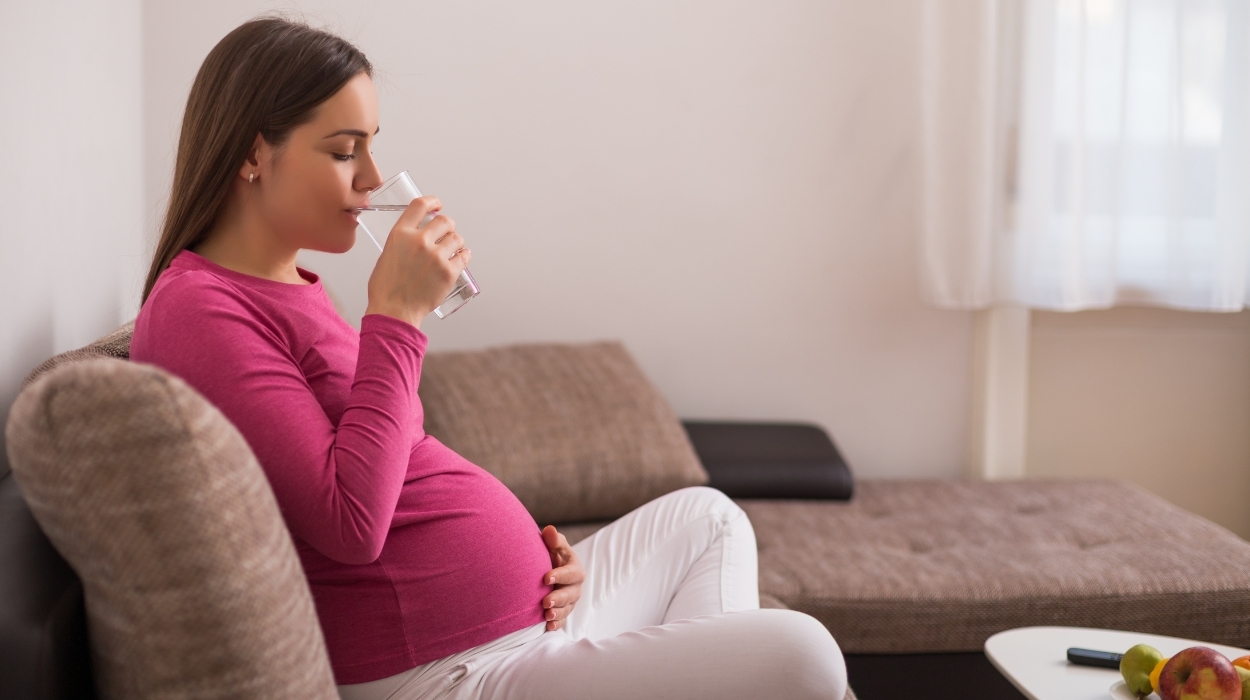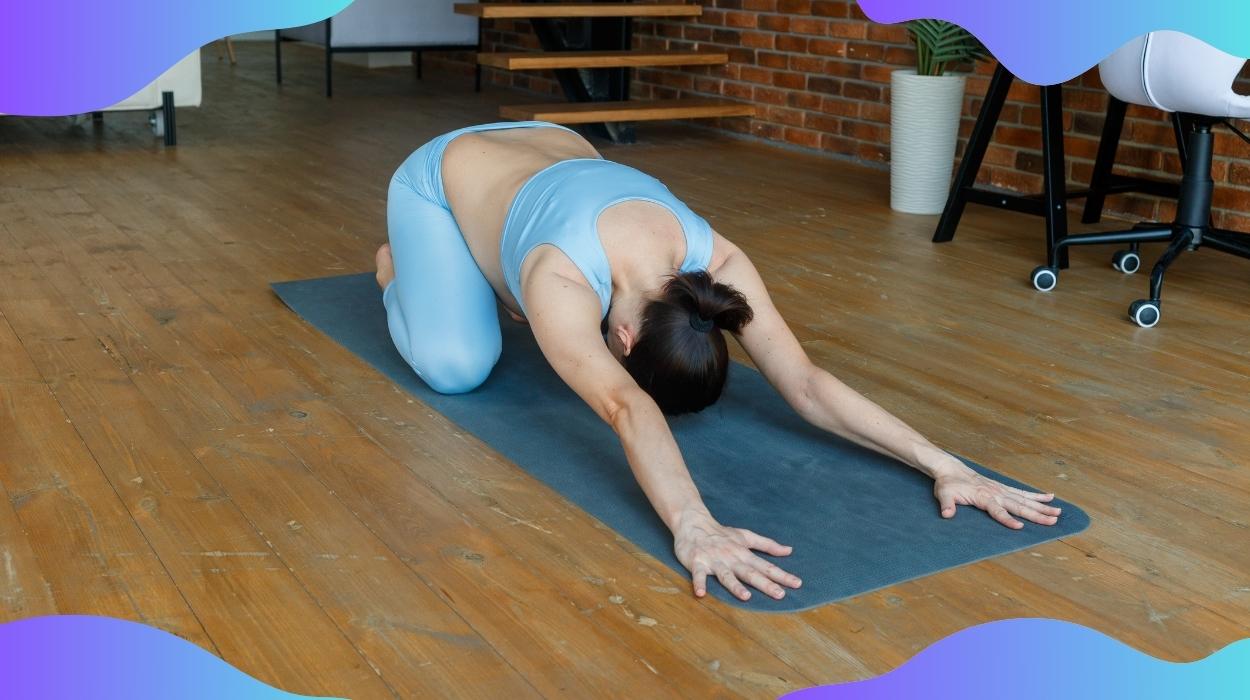Pregnancy brings joy and anticipation but can also bring unwelcome discomforts like gas and bloating. Changes in a pregnant woman’s body can sometimes lead to sluggish digestion and trapped gas, causing discomfort. However, there are effective ways to find relief. This article will explore the best positions to relieve gas while pregnant.
These positions encompass gentle stretches and targeted yoga poses that ease digestive discomfort, alleviate excess gas, and promote overall well-being during pregnancy. Each position offers unique benefits, working to stimulate digestion and alleviate gas pain. Whether in the early stages of pregnancy or nearing your due date, these positions can be easily incorporated into your daily routine.
By learning and practicing these positions, you can take control of your comfort and well-being, reducing the discomfort associated with gas and bloating. Let’s explore the best positions to relieve gas during pregnancy, empowering you to enjoy a more comfortable journey as you nurture your growing baby.
Best Positions to Relieve Gas While Pregnant
- Sitting Upright: Aligns the digestive system, relieving gas.
- Cat-Cow Pose: Stretches abdominal muscles and aids gas release.
- Child’s Pose: Gently compresses the abdomen, relieves gas, and promotes relaxation.
- Gentle Walking: Aids digestion and relieves gas.
- Side-Lying Position: Reduces gas and bloating, especially when lying on the left side.
- Squatting Position: Opens up the pelvic area and aids the release of trapped gas.
- Seated Twist: Stimulates digestion and alleviates gas discomfort
Yoga Benefits for Gas Pain
- Deep Breathing: Practicing diaphragmatic breathing and pranayama techniques during yoga promotes relaxation, reduces stress, and enhances digestion. Calming the nervous system, these breathing exercises help alleviate gas pain.
- Relaxation and Stress Reduction: Yoga promotes relaxation, reduces stress levels, and creates a harmonious mind-body connection. Lowering stress can improve digestion and alleviate gas discomfort.
- Improved Digestion: Regular yoga practice can enhance overall digestion and promote a healthy digestive system, reducing gas and related pain.
- Mindful Eating: Yoga encourages mindful eating habits, which can help prevent overeating, improve digestion, and minimize the chances of experiencing gas pain.
- Strengthened Core Muscles: Many yoga poses engage the core and abdominal muscles. A strong core can support healthy digestion and prevent gas buildup.
7 Positions to Relieve Gas While Pregnant 2024

Sitting Upright
Sitting upright is a simple yet effective position to relieve gas during pregnancy. Maintaining an upright posture allows your digestive system to align correctly, preventing the buildup of gas. Sitting upright helps promote better digestion and the smooth passage of gas through the digestive tract. It also helps reduce the chances of experiencing gas pains and bloating. To sit upright, find a comfortable chair or cushion that supports your back adequately. Sit with your back straight, shoulders relaxed, and feet flat on the floor.
Avoid slouching or hunching over, as this can compress the abdomen and lead to gas accumulation. Instead, maintain a tall, relaxed posture, allowing your digestive system to function optimally. Use a supportive cushion or pillow behind your lower back to maintain proper spinal alignment. This position can be adopted during meals while working or when experiencing discomfort due to gas. Remember to take regular breaks to stretch and move around to further aid digestion and prevent gas buildup.
Cat-Cow Pose
This is one of the best positions to relieve gas while pregnant. The Cat-Cow Pose is a gentle yoga posture that stretches the abdominal muscles and relieves gas pain. It involves alternating between arching and rounding the back in a fluid motion. Start on all fours with your hands directly under your shoulders and your knees under your hips. As you inhale, lift your tailbone and chest towards the ceiling, allowing your abdomen to sink toward the floor. This is the Cow position. As you exhale, round your spine towards the ceiling, tucking your chin towards your chest and pulling your belly button in towards your spine.
Repeat this fluid movement several times, coordinating your breath with the motion. The Cat-Cow Pose helps to stimulate the digestive system and relieve gas by massaging the organs in the abdominal region. It stretches the muscles in the abdomen and releases tension, allowing for the expulsion of trapped gas. Regular practice of this pose can also help alleviate back pain and improve overall spinal flexibility. It is vital to perform the Cat-Cow Pose mindfully and within a comfortable range of motion, respecting the limitations of your pregnant body.
Child’s Pose
Child’s Pose, also known as Balasana, is one of the most effective positions to relieve gas while pregnant. It is a comforting and restorative yoga pose that can relieve gas during pregnancy. It involves sitting back on your heels and folding your body forward, bringing your forehead to the ground, or resting it on a cushion or yoga block. Your arms can be extended forward or relaxed by your sides. In this position, the abdomen is gently compressed, promoting the movement of extra gas and aiding digestion.
Child’s Pose also helps to relax the body and mind, reducing stress and tension that can contribute to digestive discomfort. By allowing your body to relax and surrender in this position fully, you create space to release gas and relieve any associated pain or bloating. Modifying the pose to accommodate your pregnancy is essential by spreading your knees wider apart to accommodate your growing belly. Use additional support, such as a bolster or folded blanket, under your forehead or between your thighs to maintain comfort and avoid straining. Take slow, deep breaths as you rest in this pose, visualizing the release of tension and discomfort with each exhale. Child’s Pose can be practiced anytime, especially when experiencing gas pain or as part of a regular yoga routine for overall well-being during pregnancy.
Gentle Walking
One of the simplest and most accessible ways to relieve gas during pregnancy is through gentle walking. Walking helps stimulate digestion, increase bowel movements, and prevent gas stagnation in the digestive tract. It also encourages the intestines’ natural peristaltic movement, aiding in gas passage. By engaging in light physical activity, you promote better blood circulation, including the abdominal region, which can support digestion and reduce gas buildup. Aim to take regular daily walks, especially after meals, to help prevent gas pain and bloating.
Choose a comfortable pace that suits your energy level and the stage of your pregnancy. Walking outdoors in nature can have additional benefits, as fresh air and a change of scenery can contribute to relaxation and stress reduction. However, if weather conditions or other circumstances prevent outdoor walks, you can also walk indoors, whether around your home, in a mall, or on a treadmill. Remember to wear comfortable footwear and clothing that accommodates your growing belly, and listen to your body’s cues to avoid overexertion.
Pelvic Tilts
Pelvic tilts are gentle exercises that engage the pelvic muscles and can be beneficial in relieving gas during pregnancy. These exercises involve tilting the pelvis back and forth while maintaining a stable and controlled movement. Stand with your feet hip-width apart to perform a pelvic tilt, placing your hands on your hips or lower back. Slowly tilt your pelvis forward, arching your lower back gently. Then, tilt your pelvis backward, rounding your lower back slightly. Repeat this rocking motion for several repetitions, focusing on engaging your pelvic muscles and maintaining a steady rhythm.
Pelvic tilts help to mobilize the abdominal and pelvic regions, stimulating digestion and promoting the movement of gas. They also strengthen the pelvic floor muscles, which can help support the digestive organs and prevent gas buildup. Incorporating pelvic tilts into your daily routine can enhance your overall abdominal strength and flexibility, contributing to improved digestion and relief from gas discomfort. It is crucial to perform pelvic tilts within a comfortable range of motion and avoid excessive strain or discomfort. Stop and consult with your healthcare provider if you experience any pain or discomfort while performing pelvic tilts.
Side-Lying Position
The side-lying position is favorable for relieving gas and promoting comfort during pregnancy. By lying on your side, particularly the left side, you can help reduce gas and bloating, improving digestion and alleviating associated discomfort. The left-side-lying position is often recommended during pregnancy as it enhances blood flow to the uterus, kidneys, and fetus. It also helps relieve pressure on major blood vessels, allowing for better circulation and digestion. To adopt the side-lying position, lie on your left side with your knees slightly bent, supporting your belly and back with pillows or cushions.
This position promotes the natural movement of gas through the digestive system, prevents gas accumulation in the intestines, and can alleviate the discomfort of gas pain. Listening to your body and switching sides if you feel discomfort or your healthcare provider advises otherwise is important. Maintaining proper alignment and support with pillows or cushions is crucial to ensure optimal comfort and prevent strain on your body. Enjoy this position during rest or sleep, and consider incorporating it into your nighttime routine to promote better digestion and relieve gas.
Squatting Position
The squatting position is a natural posture that can aid in relieving gas while pregnant. Squatting opens up the pelvic area, allowing for the release of trapped gas and promoting healthy digestion. To assume a squatting position, stand with your feet shoulder-width apart and gradually lower your body by bending your knees. Keep your back straight and lower yourself into a comfortable squat, resting your forearms on your thighs for support. If needed, you can also use a sturdy
Potential Side Effect
While many positions relieve gas while pregnant, it’s essential to be aware of potential side effects that may occur. It’s important to note that individual experiences may vary, and it’s always advisable to consult with your healthcare provider before trying new positions or techniques.
- Increased Discomfort: certain positions are uncomfortable or exacerbate their gas pain.
- The strain on Joints and Muscles
- Risk of Falls or Injury.
- Impact on Blood Pressure
- Preterm Labor
Other Treatments for Pregnancy Gas Pains

In addition to positional techniques, there are other treatments available to alleviate pregnancy gas pains. These include:
- Dietary Modifications: Adjusting your diet by avoiding gas-inducing foods such as carbonated drinks, fried foods, and foods known to cause gas can help reduce discomfort.
- Smaller, Frequent Meals: Eating smaller, more frequent meals throughout the day can prevent overeating and aid digestion, reducing the likelihood of gas buildup.
- Digestive Aids: Over-the-counter remedies like simethicone or antacids may provide relieve gas pains. However, it’s essential to consult your healthcare provider before using any medications during pregnancy.
- Hydration: Staying adequately hydrated can support digestion and prevent constipation, which can contribute to gas pain.
- Gentle Exercise: Light physical activity, such as walking or prenatal yoga, can help stimulate digestion and relieve gas.
When Should You See a Doctor?
You must seek medical attention if you experience severe or persistent gas pains during pregnancy. Contact your healthcare provider if you encounter the following:
- Severe Abdominal Pain
- Unusual Symptoms such as fever, vomiting, blood in stool, or significant changes in bowel movements along with gas pain.
- Concerns about Your Baby.
Conclusion
In conclusion, gas pains during pregnancy can be uncomfortable, but various positions and treatments are available to alleviate the discomfort. Incorporating positions like sitting upright, practicing yoga poses, gentle walking, and making dietary modifications can provide relief. However, it is crucial to be mindful of potential side effects and consult with a healthcare provider if needed. By prioritizing your comfort, seeking medical guidance when necessary, and exploring suitable remedies, you can easily navigate pregnancy gas pains and enjoy a more comfortable pregnancy journey.
Frequently Asked Questions
Gas pains during pregnancy can be caused by hormonal changes, slowed digestion, and the growing uterus putting pressure on the digestive organs.
Certain foods like fried foods, carbonated drinks, and vegetables like broccoli and cabbage which increase gas production, may contribute to increased gas during pregnancy.
The gas itself does not typically harm the baby. However, excessive gas can cause discomfort for the mother. If you have concerns, consult your healthcare provider.
It is recommended to consult with your healthcare provider before taking any over-the-counter medications, including gas-relief remedies, during pregnancy.
You can prevent gas pains by eating smaller, frequent meals, avoiding gas-inducing foods, staying hydrated, and engaging in regular physical activity.
Yes, natural remedies like gentle exercise, dietary modifications, and certain herbal teas like peppermint or ginger can help alleviate gas during pregnancy.
If you experience severe or persistent gas pains, accompanied by other concerning symptoms, such as fever or changes in bowel movements, consult your healthcare provider.
While gas pains are often normal during pregnancy, they can sometimes be a symptom of an underlying condition. It’s essential to consult with your healthcare provider to rule out any potential
